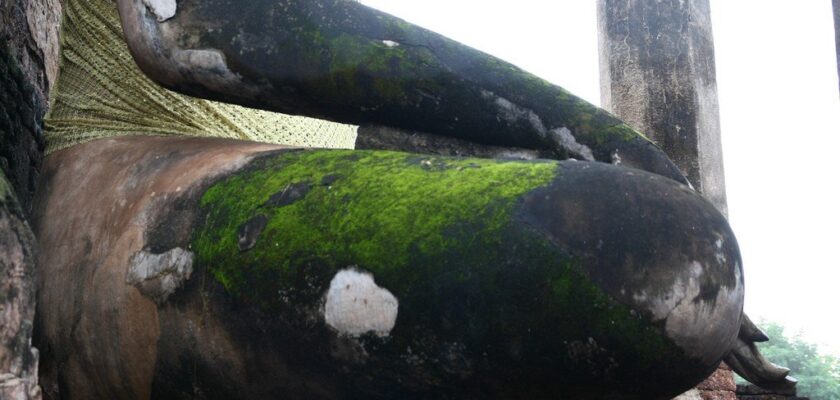Chaliang
Chaliang is an ancient settlement located 2.5 km downstream at the bend of the Yom River, founded by the Khmer people. It consists of several buildings.
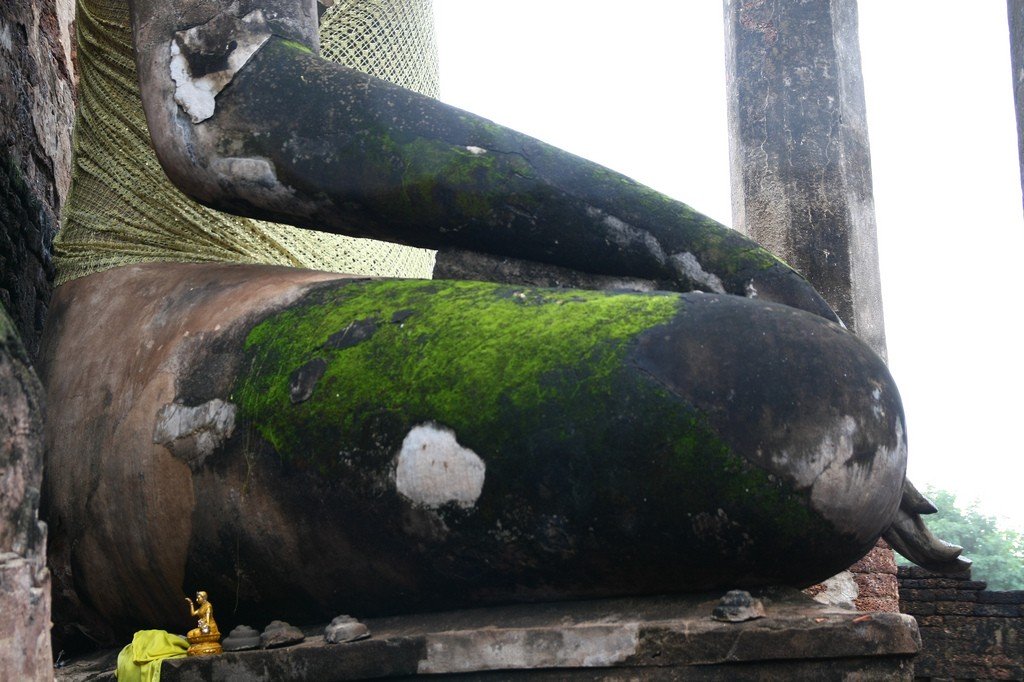
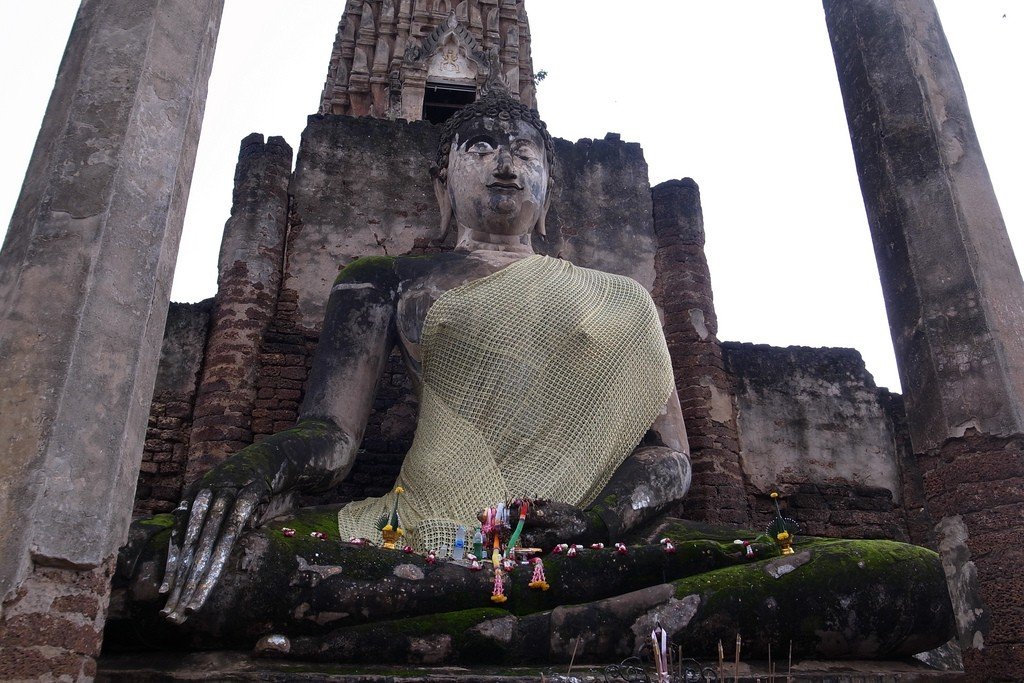
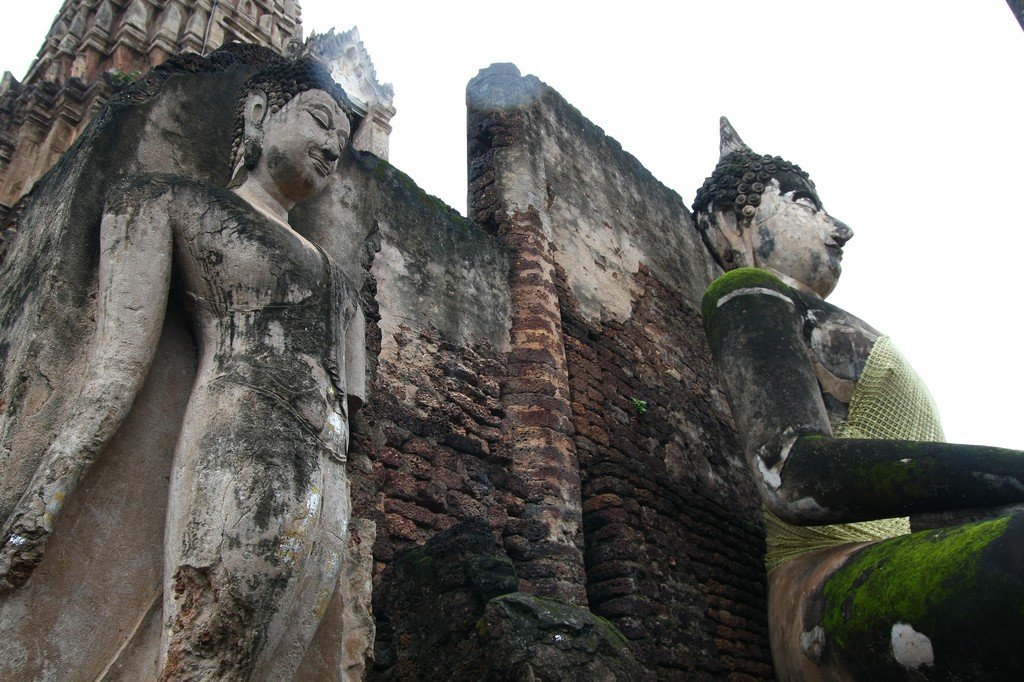
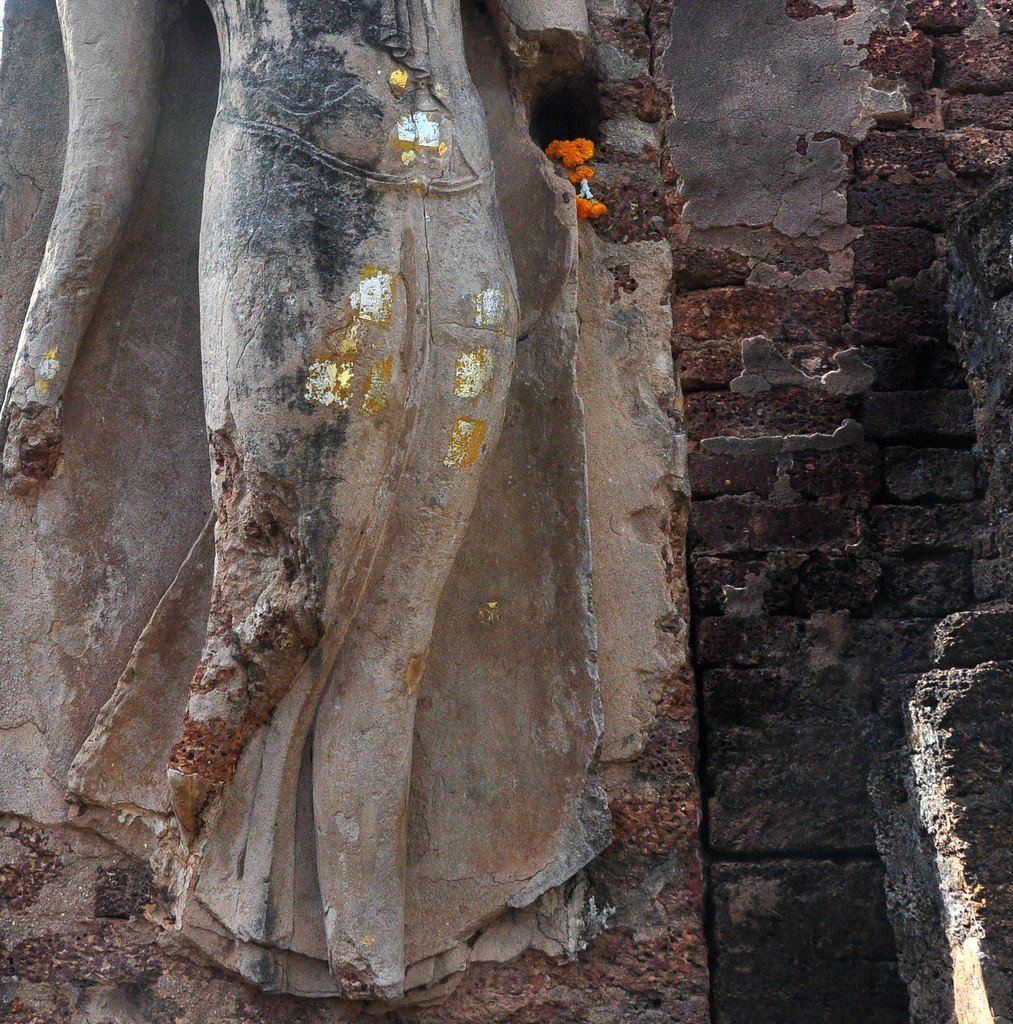
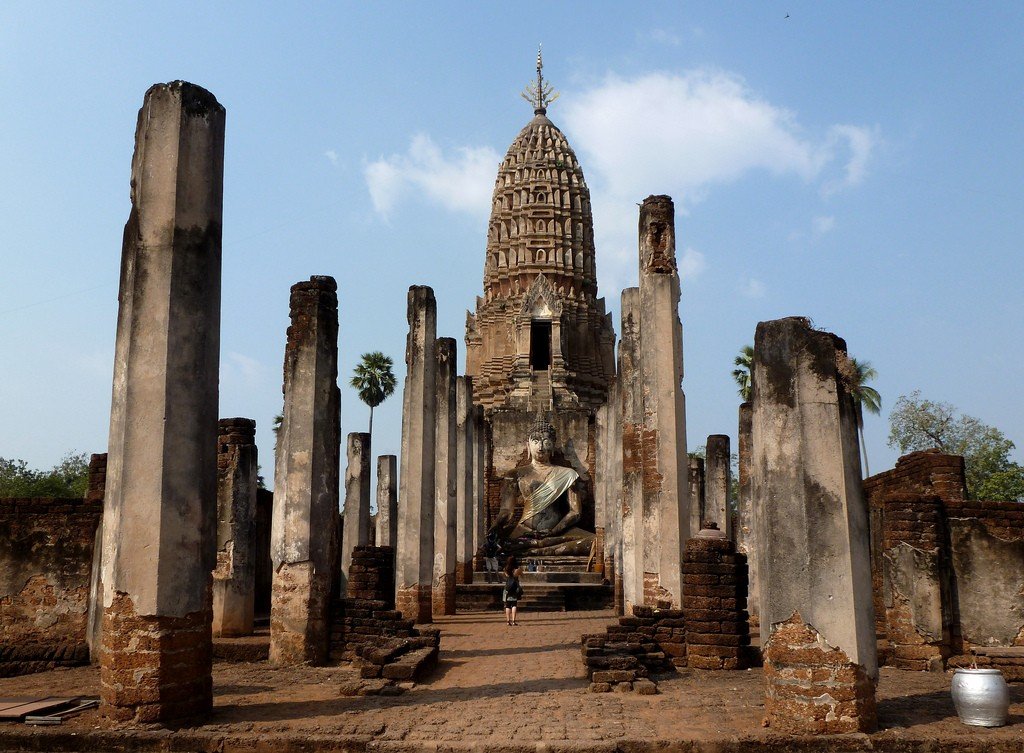
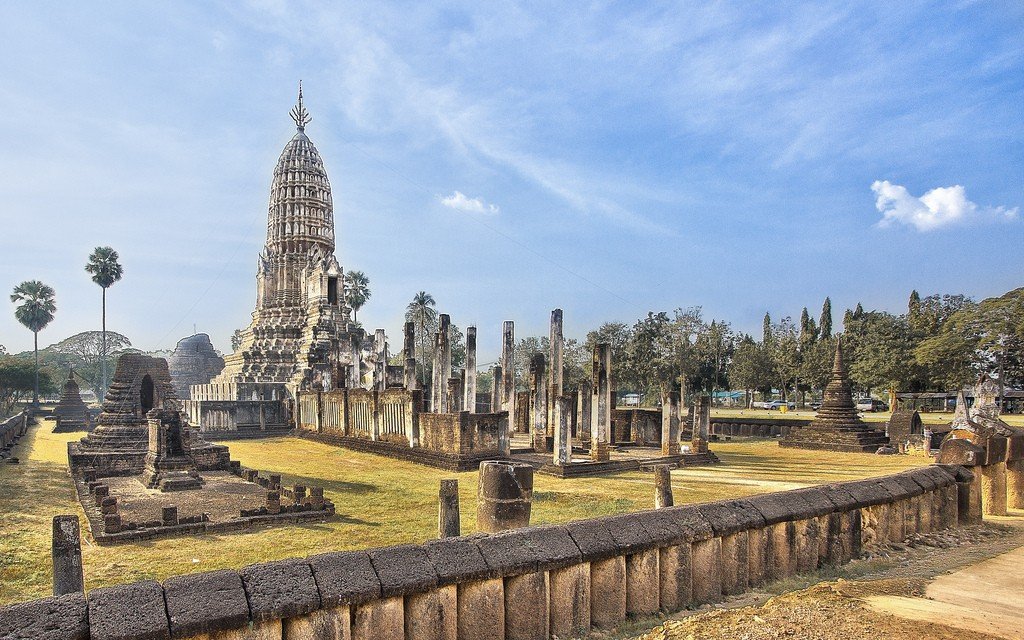
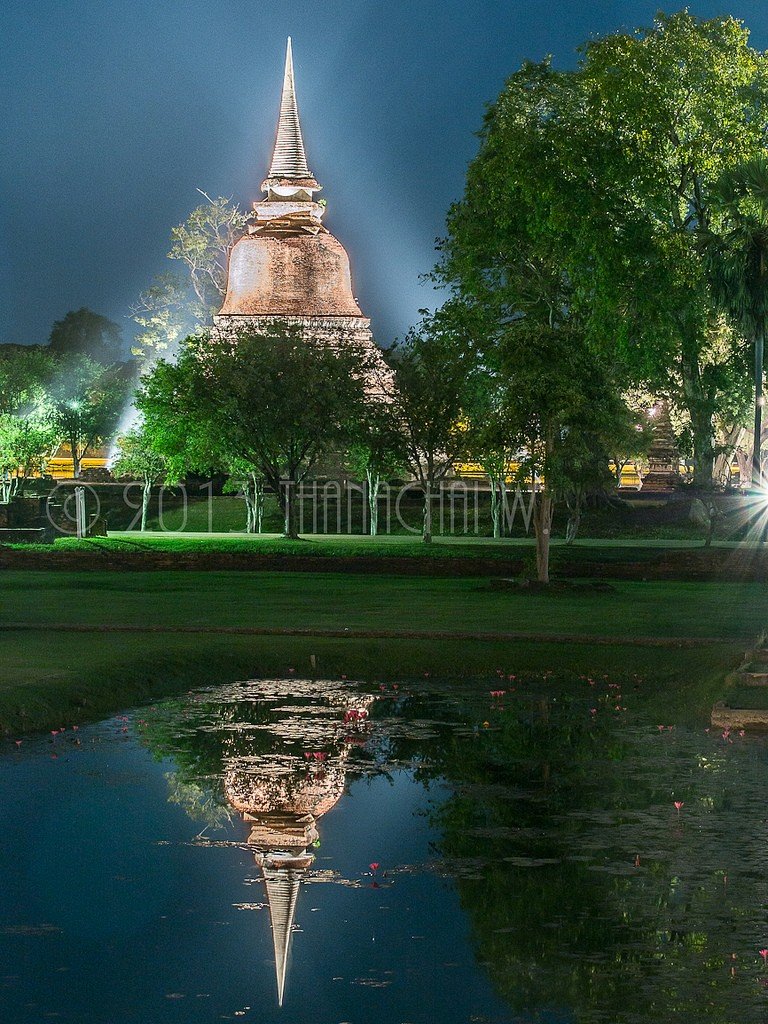
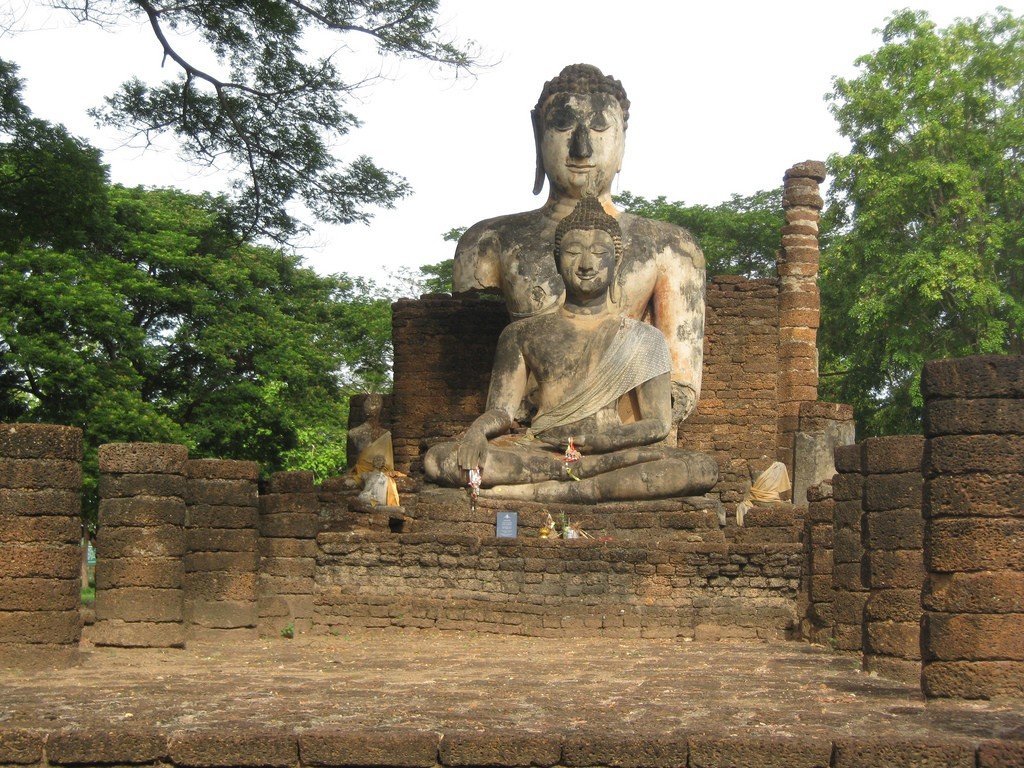
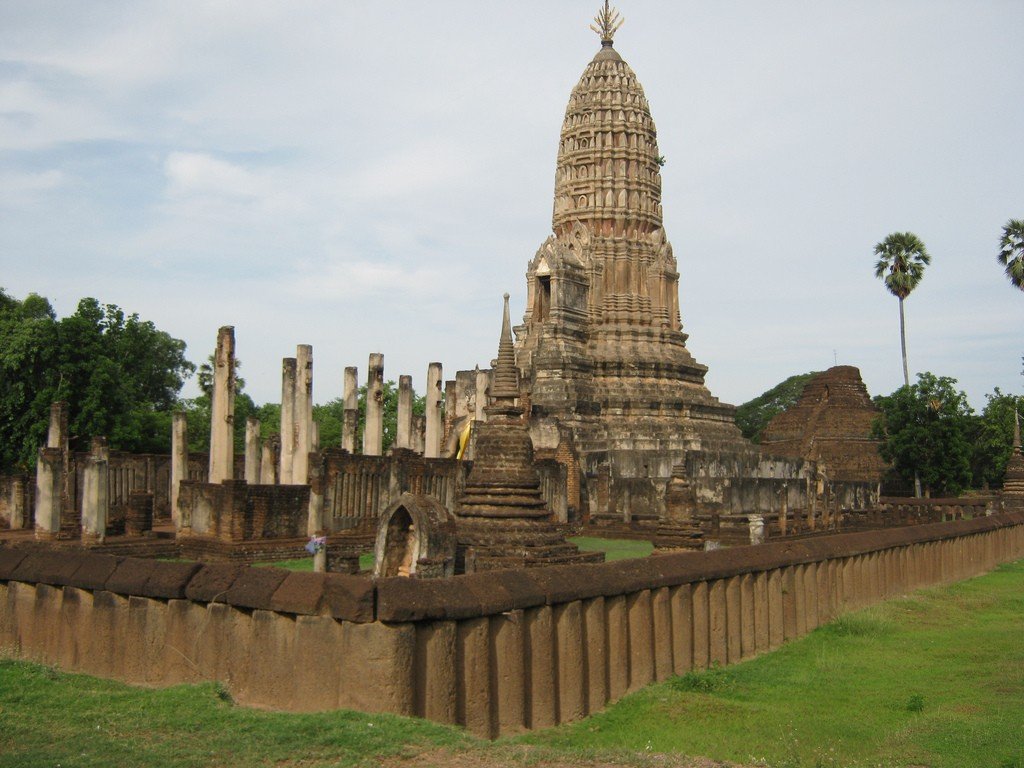
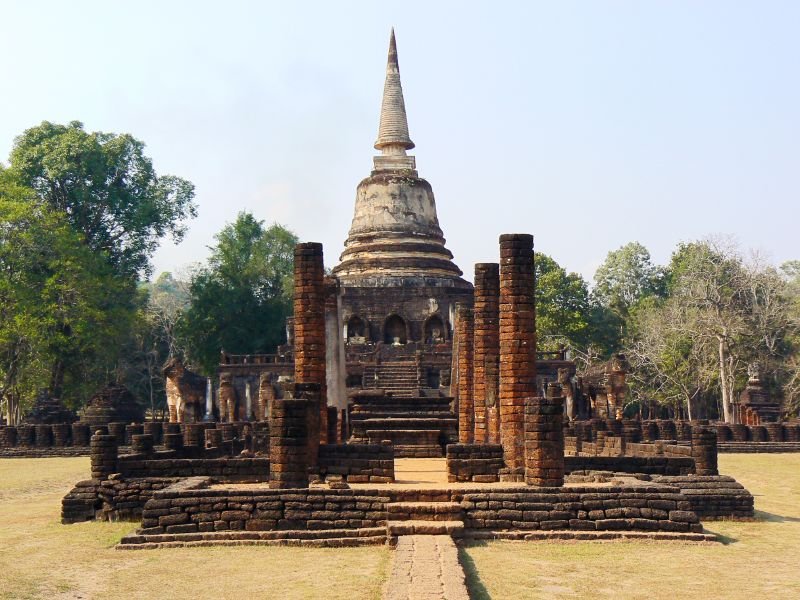
General information
Phra That, a Khmer sanctuary, the predecessor of the later Phra Si Ratana Mahathat Wat, was erected at the narrowest point of the river bend, so that it could only be approached from one side by land. An inscription made by order of King Rama Kam Kheng in 1292 states that the king in 1285 dug up relics in an ancient Khmer prang (possibly referring to Wat Chang Lom) and within six years built a new chedi for them in the Chang Lom temple. Legend, however, tells us that before doing so, the king devoted a month and six days to the worship of the relics. The beautiful chedi on a stepped plinth of complex shape, which we see today, was built in the early 15th century in the Ayutthaya era, and it may be that this plinth is the last thing that remains of the buildings of King Rama Kamkheng.
.The seated Buddha statue on the north side of the prang has undergone significant restoration. On the western side of the prang, the ruins of a small shrine with a bronze imprint of the Buddha’s foot can be seen. In a small niche next door stands a beautiful stone statue of the Buddha with a naga shielding him from a downpour. The nine-headed serpent is depicted with great skill. The high relief of the walking Buddha is one of the highest achievements of Sukhothai sculpture. In a small shrine east of the prang, a stucco relief from the time of King Rama Kamkheng is preserved, as well as another image of a standing Buddha.
.Of particular interest is the cylinder wall surrounding the temple precinct, over 1 meter thick, which was built from 1285 to 1288 under King Rama Kamkheng. The pillars are supported by heavy roof-shaped lateral tops. The three pillars above form a gateway, with the top of the middle pillar decorated with stucco figures and ornaments. The large expressive faces at the four corners are unusual. Perhaps they appeared under the influence of similar architecture of towers with carved faces in the Bayon temple in Angkor Thom (modern Cambodia).
.The temple complex also includes a large 14th-century chedi with clear signs of Ceylonese influence, erected by Mon monks. At the eastern edge of the site stands a mondhop called Phra-Ruang, dedicated to the son of the snake goddess.
.